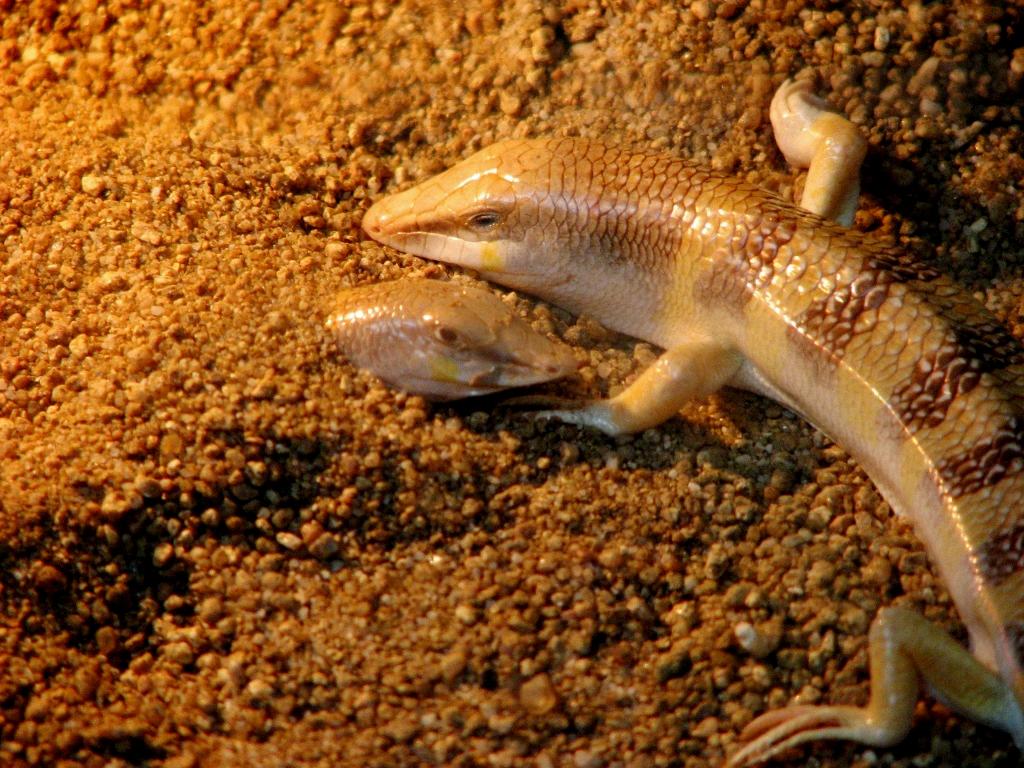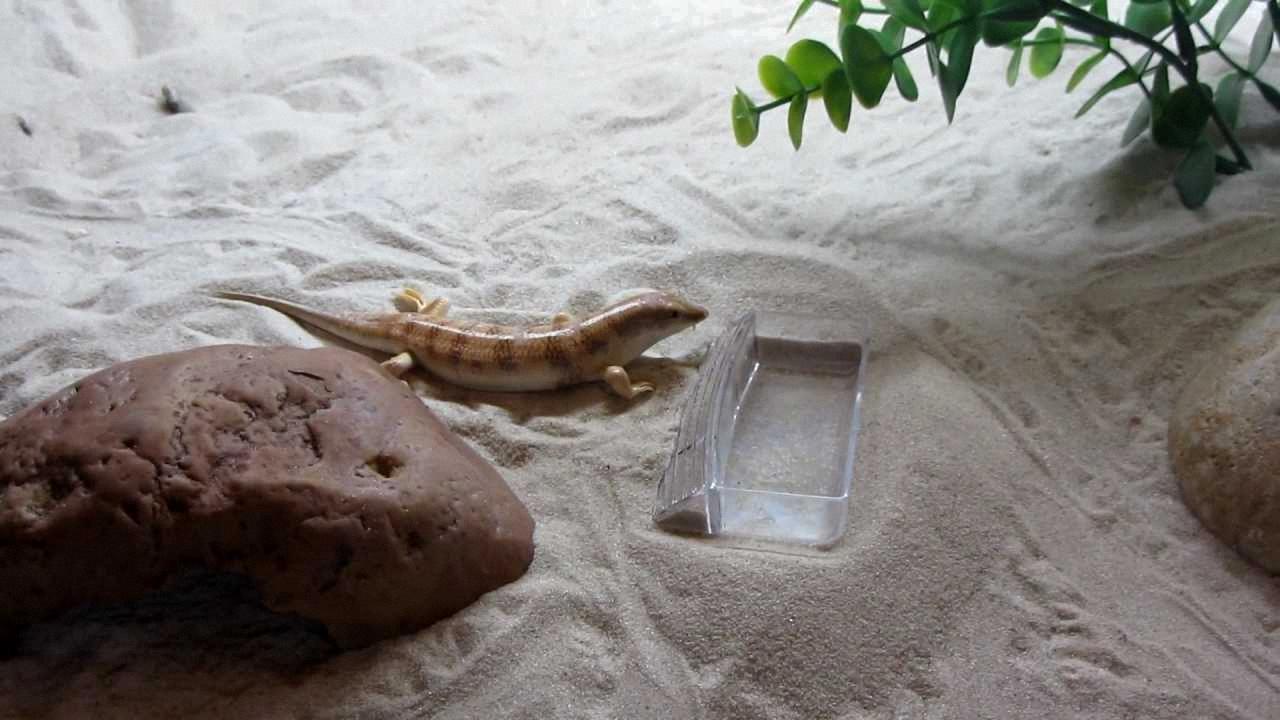Welcome to Sandfish 101! Sandfishes are amazing creatures with some unique adaptations for surviving in sandy environments. To make their way through the sand, they use their muscular tails and fins while moving their bodies side-to-side like a snake. This unique swimming style is called “serpentine swimming” and helps them stay hidden from predators while searching for food.
When it comes to caring for these fascinating creatures, there are a few things to keep in mind – sandfish are not great pets for all keepers, especially beginners. They require specialized care and handling that requires experience with keeping aquatic animals. If you do decide to keep them as pets, it’s important to make sure you provide them with a habitat that is suitable for their neds – plenty of clean water at temperatures between 74°F and 82°F; plenty of oxygen; sandy substrate free from debris; hiding places made from rocks or plants; access to plenty of food; and regular water changes (at least every two weeks).

Source: commons.wikimedia.org
Are Sandfish Suitable as Pets?
Sandfish can make rewarding pets for experienced keepers. They are small, active lizards that need a large enclosure and require specific care, so they might not be the best choice for novice reptile keepers. Sandfish need a deep substrate of sand or calcium-rich soils in order to burrow, which is essential to their well-being. A temperature gradient between 78°F and 80°F should be provided, as well as ample hiding places, making sure the enclosure has both cool and warm areas. Humidity levels should be maintained at around 70%. Sandfish also require UVB lighting to help them synthesize vitamin D3 and regular feedings of crickets and other insects. With the proper setup, these lizards can be quite entertaining to watch as they move though the substrate with their unique lateral undulation movement.
Is the Sandfish a Lizard?
Yes, a sandfish is a lizard. It belongs to the family Scincidae, which is a type of skink. Sandfish are found in desert regions of North Africa and southwestern Asia, and they get their name because they use an undulating motion to “swim” throuh the loose sand of their habitat. There are six or seven species in the genus Scincus that are called sandfish. They have scales and long tails, as well as other characteristics typical of lizards.
Cost of a Sandfish
The cost of a sandfish in the US generally ranges from around $30 to $50, depending on the species and size. The Eastern Sandfish (S. mitranus) and Common Sandfish (S. scincus) are two of the most commonly found species in pet stores. Generally speaking, smaller sandfish will cost less than larger ones, so if you’re lookng for a budget-friendly option, be sure to check out the smaller sizes. Additionally, some pet stores may offer discounts or promotions on sandfish that can help you save even more money. All in all, you can expect to pay somewhere in the range of $30 to $50 for a sandfish in the US.

Source: guatemala.inaturalist.org
Are Sandfish Skinks?
Yes, sandfish (Scincus spp.) are skinks. They have the typical stout body and short legs of a skink, as well as a short tail, a long wedge-shaped snout with a countersunk lower jaw, feather-like toes, and tiny black eyes. They usually measure 6-8” (15-20cm) long and have an average lifespan of 6-10 years.
Do Sand Fish Require Light?
Yes, sandfish skinks need light! They are diurnal, which means that they are most active during the day, and require exposure to sunlight and UVB rays in order to stay healthy. Without proper lighting, they may become lethargic and suffer from health issues such as metabolic bone disease. As such, it is important to provide them with appropriate lighting for their enclosure that mimics the natural environment of sandfish in their native habitat. This includes providing a combination of both UVA and UVB light sources that are on for 12-14 hours per day.
Minimum Tank Size for a Sand Fish
A sandfish skink needs a minimum of a 20 gallon long tank to stay healthy and happy. This tank should measure at least 30”x12”x12”. It’s important to note that this tank should be kept in an area away from direct sunlight and drafts, as sandfish skinks are sensitive to extreme temperatures. Providing your skink with a hide or den, as well as plenty of branches and climbing surfaces, is also essential for its wellbeing. Additionally, you’ll need to ensure the tank is properly lit with full-spectrum lighting and has a temperature gradient between 75° – 85°F at all times. With the rigt environment and regular care, your sandfish skink will have everything it needs to thrive!

Source: youtube.com
Where is the Sandfish Found?
Sandfish can be found in the desert. They typically inhabit sandy areas and are active during the day, usually between 6am and 8pm. They can be encountered throughout the year, regardless of season. Sandfish feed on small invertebrates, so they can generally be found wherever there is avaiable food.
Average Size of Sandfish Skinks
The Algerian sandfish skink is a species of skink native to North Africa that is known for its unique ability to swim through sand as if it were water. An adult common sandfish skink generally reaches about 20 cm (8 inches) in length, including the short tail. It has a slender body and a smooth, glossy skin that can range in color from olive green to brownish-gray. Its underside is usually white or yellowish. These skinks have a well-developed head with large eyes and two pairs of small, sharp claws on each foot.
What Do Sand Fish Consume?
Sandfish skinks are insectivores, which means they primarily feed on insects. Their diet consists of crickets, small grasshoppers or locusts, Dubia roaches, Discoid roaches, Red runner roaches, Black soldier fly larvae, Mealworms and Darkling beetles. All of these insects should be gut-loaded for optimal nutrition for your sandfish skink. Gut-loading is the process of feeding your feeder insects with a nutritious diet before offering them to your pet. This ensures that the prey items contain more nutrients than they would in ther natural environment. It is also important to provide a varied diet to ensure that your sandfish skink receives all the vitamins and minerals it needs for a healthy life.
Investigating the Unusual Swimming Ability of Sandfish
The sandfish, also known as Scincus scincus, has a unique adaptation that enables it to quickly and efficiently swim throgh sand. Its long, wedge-shaped snout and countersunk lower jaw allow it to rapidly bury itself into the sand. Its body is flattened on the sides, covered with smooth shiny scales, and its legs are short and sturdy with long fringed toes. The tail tapers to a fine point which helps propel it through the sand. The combination of its shape and powerful tail movement gives it the ability to rapidly propel itself forward in a series of jerky movements through the sand, allowing it to swim with ease.
Conclusion
In conclusion, sandfish is a term that can refer to two different creatures. There is the Gonorhynchus gonorhynchus, which lives in shallow to deep waters of the Indo-Pacific region and are capable of rapidly burrowing in sand. The other species is any of the six or seven species of the genus Scincus found in desert regions of North Africa and southwestern Asia. These lizards are known as sandfish because they can “swim” through loose sand in their preferred habitat. While thee creatures may not be suitable for beginner pet owners, they can be rewarding pets for those with some experience.












